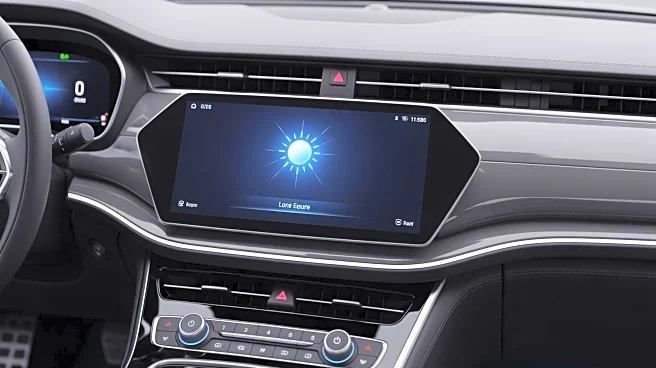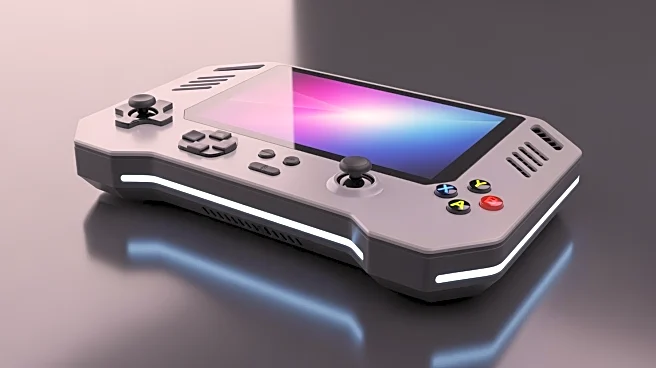What's Happening?
The Abxylute 3D One, a new glasses-free 3D handheld gaming PC, has been introduced to the market, drawing attention for its unique features and significant size. The device, funded through Kickstarter, boasts an 11-inch screen with a substantial bezel
and large clip-on controllers, making it notably larger than typical handheld devices. It utilizes Intel's Lunar Lake APU with integrated graphics, which may not match the performance of discrete GPUs found in gaming laptops. The device's glasses-free 3D display employs eye-tracking technology to create a 3D visual effect, though initial impressions suggest mixed results, particularly in gaming contexts. The Abxylute 3D One is priced at $1,799, with early bird offers reducing the cost to $1,499.
Why It's Important?
The introduction of the Abxylute 3D One highlights ongoing innovation in the gaming hardware sector, particularly in the realm of handheld devices. However, its high price point and the challenges associated with its size and 3D functionality may limit its appeal. The device's performance, especially in rendering 3D graphics, could impact its competitiveness against more established gaming laptops that offer better performance at similar or lower prices. This development underscores the balance manufacturers must strike between innovation and practicality to meet consumer expectations and market demands.
What's Next?
As the Abxylute 3D One enters the market, consumer feedback and reviews will likely influence its future iterations and potential success. The company may need to address the device's size and performance issues to enhance its appeal. Additionally, the broader gaming community's response could shape the direction of future handheld gaming devices, particularly in terms of integrating advanced technologies like glasses-free 3D displays. The market's reception will determine whether such innovations become mainstream or remain niche.
Beyond the Headlines
The Abxylute 3D One's launch raises questions about the viability of high-cost, niche gaming devices in a market dominated by more versatile and affordable options. The device's reliance on integrated graphics and its substantial size challenge the traditional advantages of handheld gaming, such as portability and ease of use. This situation highlights the ongoing tension between cutting-edge technology and consumer practicality, which could influence future design and marketing strategies in the gaming industry.













